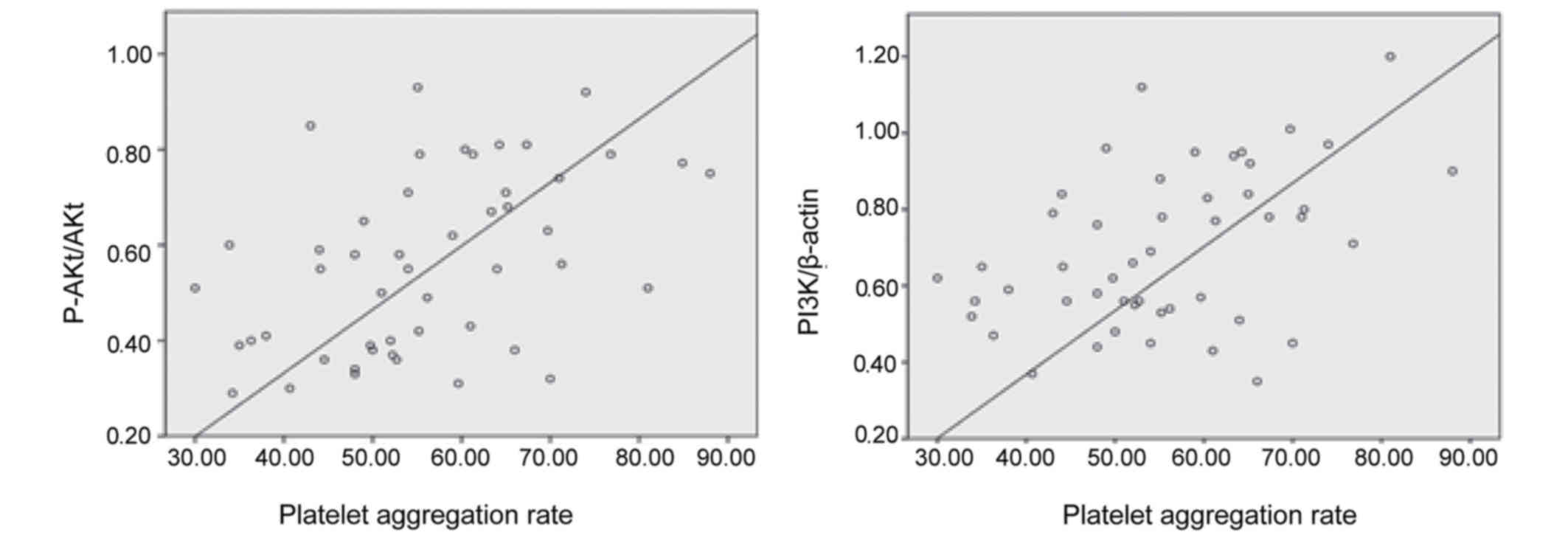Predictive value of platelet aggregation rate in postpartum deep venous thrombosis and its possible mechanism
- Authors:
- Published online on: May 2, 2018 https://doi.org/10.3892/etm.2018.6116
- Pages: 5215-5220
Metrics:
Total
Views: 0 (Spandidos Publications: | PMC Statistics:
)
Total PDF Downloads: 0 (Spandidos Publications: | PMC Statistics:
)
Abstract
The present study investigated the predictive value of the platelet aggregation rate in postpartum deep venous thrombosis and its possible mechanism. From January 2014 to January 2016, 23 patients with postpartum deep vein thrombosis of lower extremity treated in the Department of Obstetrics of Beijing Chaoyang Hospital were as assigned as the observation group. At the same time, 25 cases with normal recovery were assigned as the control group. Blood samples were collected from all the subjects. The platelet aggregation rate was measured using a platelet aggregation apparatus. Plasma platelet activating factor (PAF) levels were measured by ELISA. The positive rate of platelet P-selectin (CD62p) and lysosomal membrane glycoprotein (CD63) was measured by flow cytometry. PI3K expression and AKt phosphorylation levels were measured by western blot analysis. The ROC curve was used to evaluate the value of the platelet aggregation rate in predicting postpartum deep vein thrombosis of lower extremity. The correlation between the platelet aggregation rate and PAF and PI3K/AKt expression was also analyzed. The cesarean section rate, platelet 5-min maximum aggregation rate, PAF level and the positive rate of CD62p and CD63 were significantly higher in the control than those in the observation group (P<0.05). Furthermore, the platelet aggregation rate was positively correlated with the expression of PAF, CD62p and CD63 (r=0.389, 0.451, and 0.452; all P<0.05). The platelet 5-min maximum aggregation rate for predicting postpartum deep vein thrombosis of lower extremity was reflected by the area under the ROC curve (AUC=0.797, P=0.000). The PI3Kp110β/β-actin and p-AKt/AKt ratio was significantly higher in the observation compared with the control group (P<0.05). In addition, the platelet aggregation rate was positively correlated with the expression of PI3K and phosphorylation level of AKt (r=0.441, 0.430; all P<0.05). The results suggested that platelet aggregation activity is elevated in postpartum deep vein thrombosis patients. It has a certain predictive value for the occurrence of postpartum deep vein thrombosis of lower extremity. Thuss, the PI3K/AKt signaling pathway may be one of the mechanisms of platelet aggregation.













